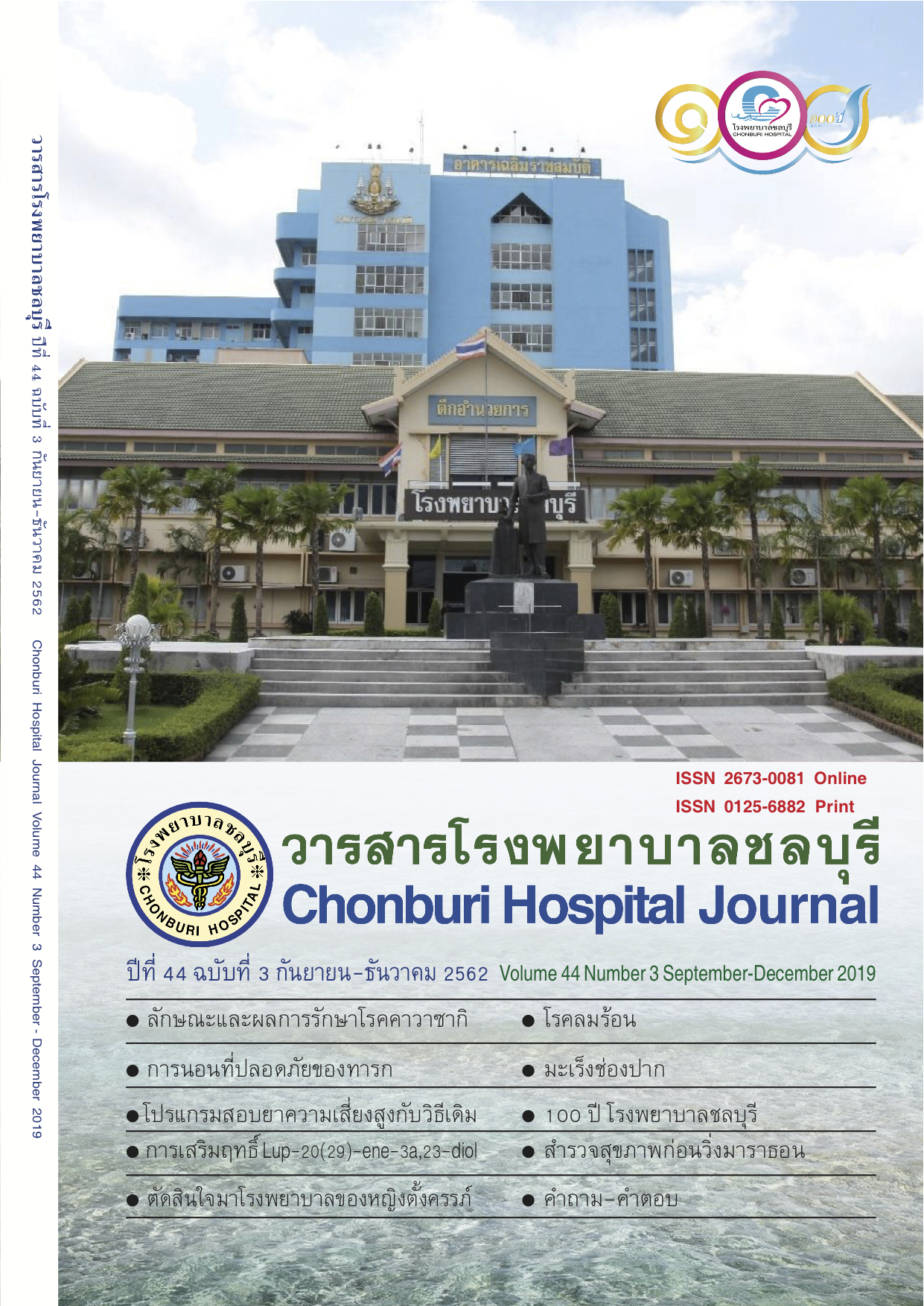Comparison of the High Alert Drug Testing Program with Traditional Method on Medication Errors in Neonatal Intensive Care Unit
Keywords:
medication errors, high alert drug, neonatal intensive care unitAbstract
The present study was a quasi-experimental research with a non-randomized control group, posttest only design which aimed at comparison of the high alert drug testing program with traditional method on medication errors. The study sample consisted of all doctor order sheets in critical newborn who received any kind of the high alert drugs which consisted of adrenaline, dopamine, dobutamine, levophed, fentanyl and dormicum were admitted into the neonatal intensive care unit (NICU) at Chonburi hospital. Two hundred and two subjects in the control group were rechecked with traditional method, while 202 subjects in the experimental group rechecked with the high alert drug testing program during May to August 2018. The instruments used in this study was the high alert drug testing program created by the researcher and validated by a panel of the three experts to confirm its content validity. The content validity index (CVI) was equal to 1.0 and was test-retested reliability, that reliability were 1.0. Data were collected by the medication error records model and were analyzed using descriptive statistics, independent t-test, and Fisher Exact test. The study findings showed that critical newborn in the experimental group who rechecked with the high alert drug testing program had medication errors lower than that of the critical newborn in the control group with statistical significance (p < 0.001). The study findings revealed that the high alert drug testing program could reduce prescribing errors and prevent incidence of medication errors in neonatal intensive care unit. Therefore, the high alert drug testing program should be integrated into care of other unit so as to further reduce incidence of medication errors.

